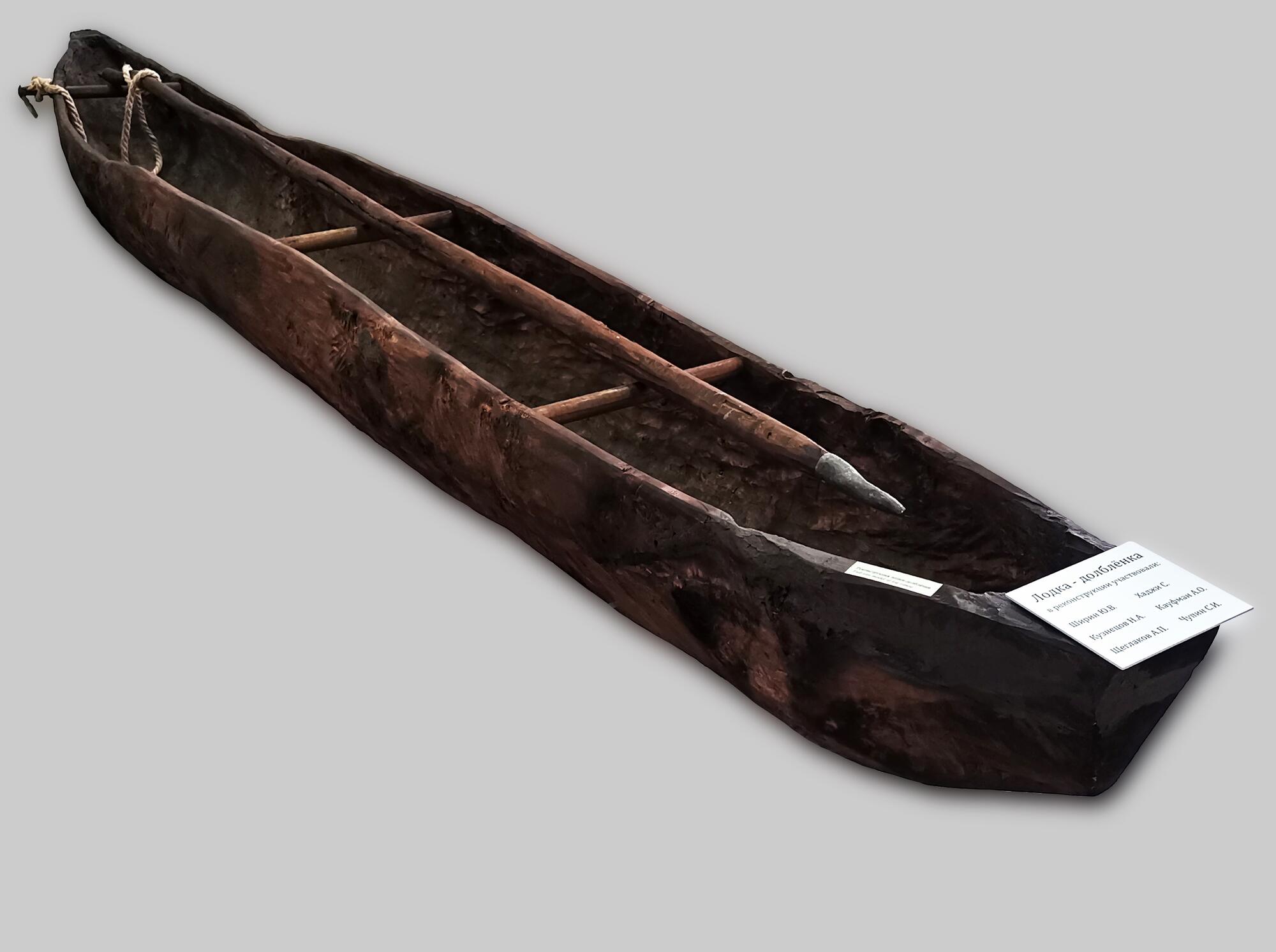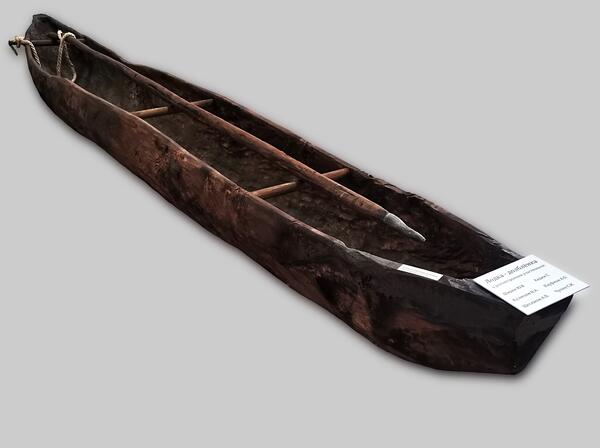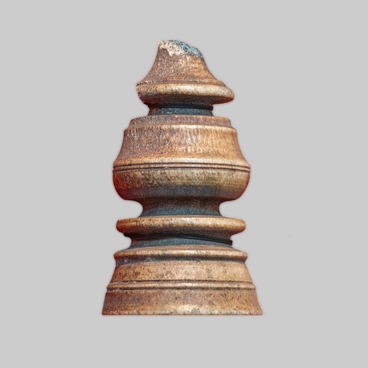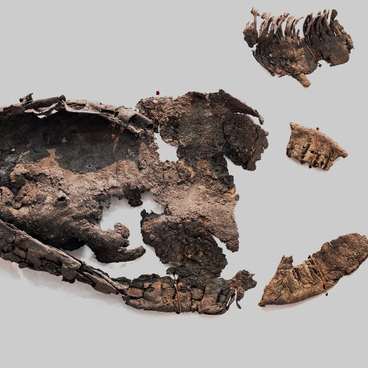The log canoe model contained in the museum collection was manufactured by a creative team led by a historian, archeologist and a museum specialist, Yury Shirin. The model was made using a technology traditional of Mountain Shoriya before mid XX century.
Such boat had no oars -instead, a pole was used for punting. The boat was made by hollowing out a whole trunk of a poplar.
Indigenous and Russian population of Kuznetsk region traditionally used waterways to transport cargo and people. Wages paid to service class people in salt and bread were delivered to Kuznetsk ostrog by water, as well as powder and lead reserves. According to the information on the Drawing of Kuznetsk Town land by Semen Remezov, it took over three weeks to get from Tomsk to Kuznetsk.
The specific features of local rivers, i.e. that they were fast flowing and shallow, and such log canoe was very convenient. That is why they remained in use until mid XX century. Apart from log canoes, people also used the boats of various size made of cramped wood planks.
Such boat had no oars -instead, a pole was used for punting. The boat was made by hollowing out a whole trunk of a poplar.
Indigenous and Russian population of Kuznetsk region traditionally used waterways to transport cargo and people. Wages paid to service class people in salt and bread were delivered to Kuznetsk ostrog by water, as well as powder and lead reserves. According to the information on the Drawing of Kuznetsk Town land by Semen Remezov, it took over three weeks to get from Tomsk to Kuznetsk.
The specific features of local rivers, i.e. that they were fast flowing and shallow, and such log canoe was very convenient. That is why they remained in use until mid XX century. Apart from log canoes, people also used the boats of various size made of cramped wood planks.



